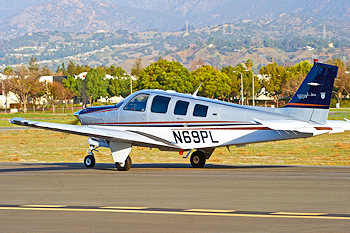Subscriber question:
"My POH tells me to cycle my constant speed propeller three times only on the first flight of the day. Why is that? Shouldn't it be required for every flight?" - Charles M.
Wally:
 “The pitch on your constant speed propeller is controlled by the propeller governor which uses engine oil to do the work. When you start your engine for the first flight of that day, the engine oil is cold and viscous. Viscous means it flows like molasses and therefore does not do a good job of controlling the propeller pitch. But since during taxi, the propeller stays in low pitch that’s not a big deal. During this time the governor does not need to regulate anything. That’s going to be different when we apply takeoff power.
“The pitch on your constant speed propeller is controlled by the propeller governor which uses engine oil to do the work. When you start your engine for the first flight of that day, the engine oil is cold and viscous. Viscous means it flows like molasses and therefore does not do a good job of controlling the propeller pitch. But since during taxi, the propeller stays in low pitch that’s not a big deal. During this time the governor does not need to regulate anything. That’s going to be different when we apply takeoff power.
While we taxi, the engine oil is starting to warm up slowly but because the propeller stays in low pitch during this time, the warmer oil does not necessarily circulate to that area.
When we do the runup, cycling the propeller a few times exchanges the colder oil in the propeller with the relatively warmer oil from the crankcase. This is a good thing because when we add full power for takeoff, the propeller governor needs to get busy and control the pitch. We need full RPM but we don’t want an overspeed. Both of those things are the job of the governor.
The engine oil usually stays warm for a long time after a flight, so cycling the propeller only once on subsequent flights is enough to confirm that everything is working properly. Exceptions to this may be required in very cold climates.
There is an aviation myth that three cycles were required to check for, first an RPM drop, second an oil pressure change and last a manifold pressure increase. No such requirement or even recommendation appears in any POH I have ever read. But since the book said to do it three times, I guess somebody invented something to do while this was going on.”
What's your process for cycling the prop on the airplane you fly?

